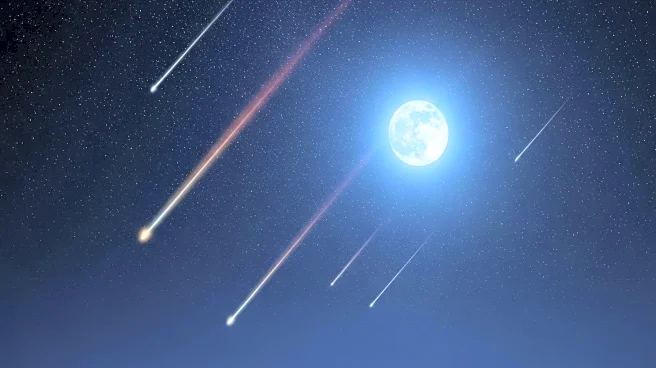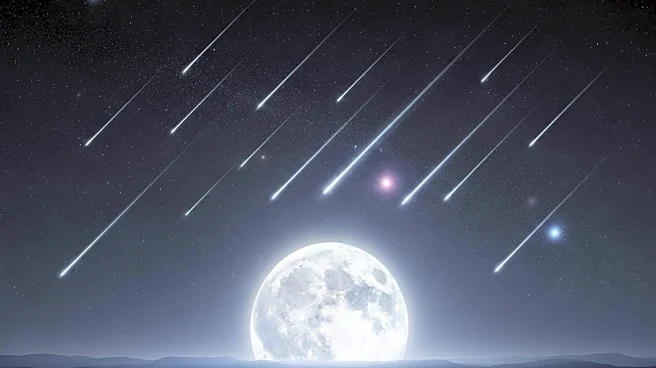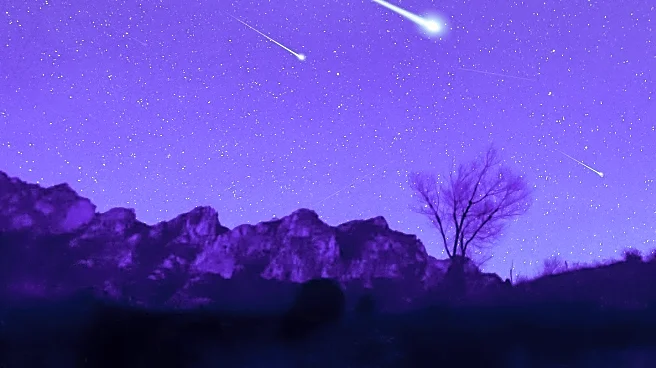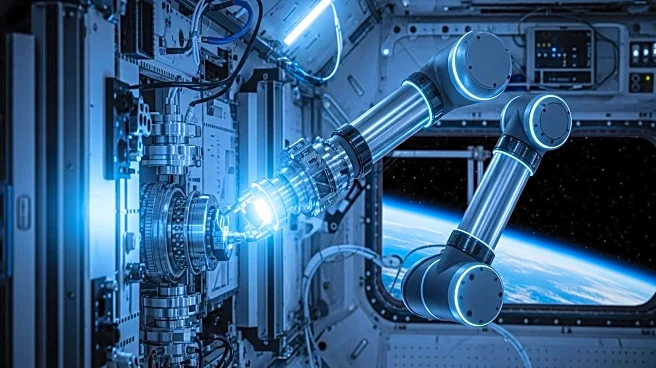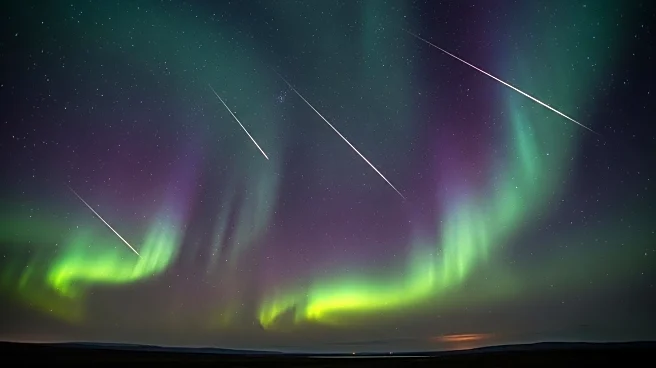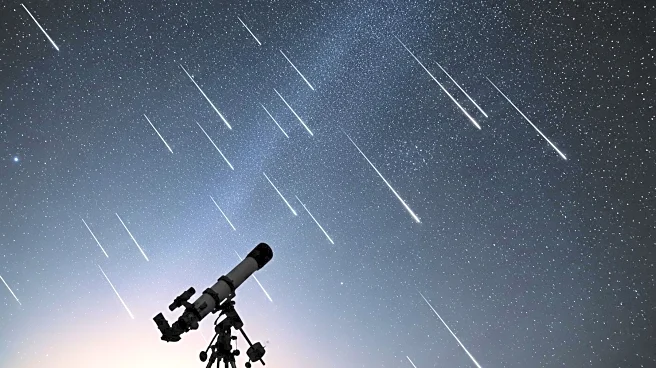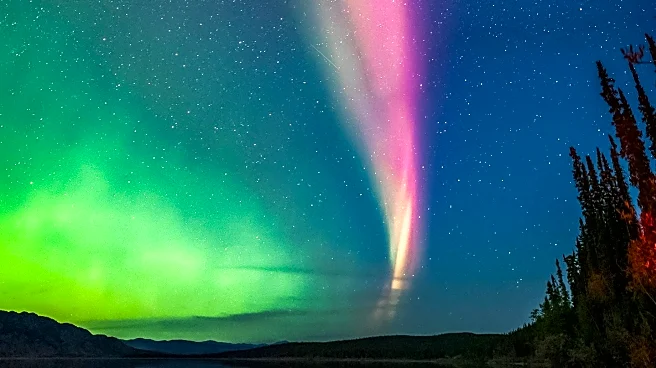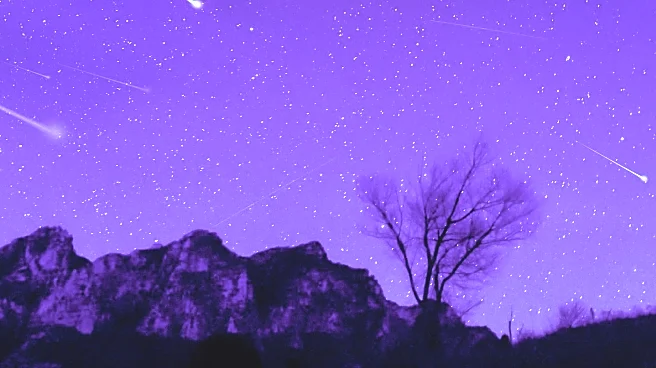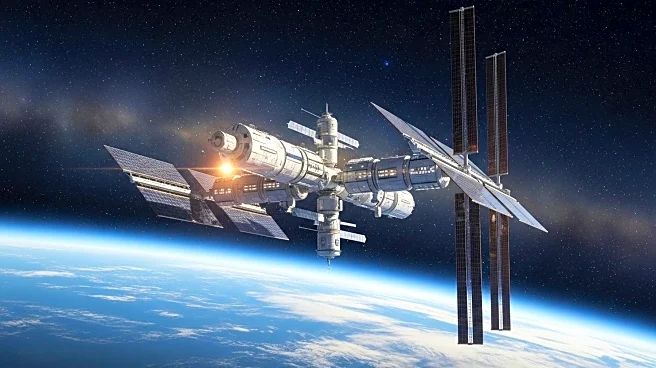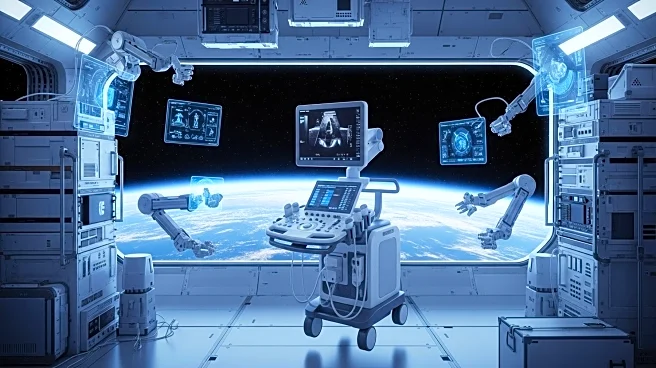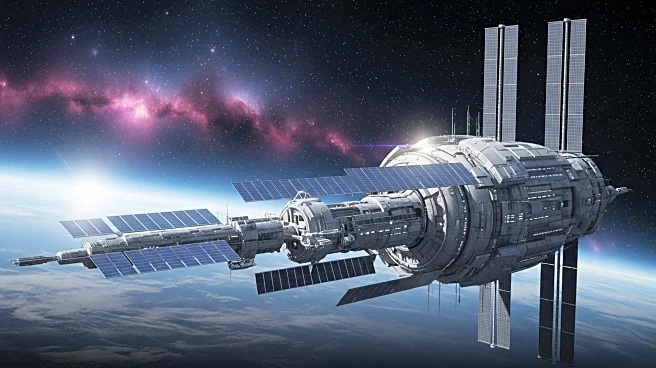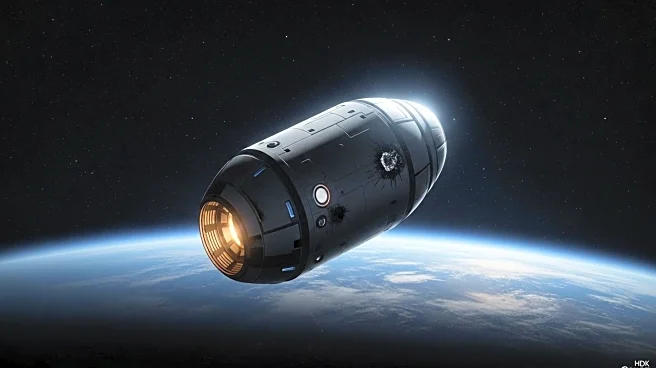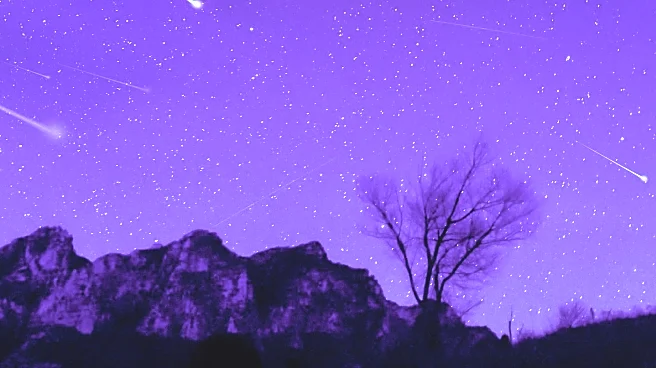What is the story about?
What's Happening?
NASA and other space agencies have outlined several celestial events occurring on October 3-4, 2025, that are of interest to stargazers. While no major meteor showers are peaking on these dates, sporadic meteors and debris from the Taurid and Agenid meteor streams may be visible. Additionally, a recent solar coronal hole has caused a geomagnetic storm, resulting in auroras visible at mid-latitudes, although these are expected to subside by October 4. The International Space Station (ISS) will be visible at dawn and dusk, and new Starlink satellite trains launched by SpaceX will be observable as they cross the night sky. Planetary alignments include Saturn, which will be visible in the west after sunset, and Venus and Jupiter dominating the early morning sky. The Moon will be a waxing gibbous, leading up to the full 'Harvest' Supermoon on October 6.
Why It's Important?
These celestial events provide opportunities for public engagement with astronomy and space science. The visibility of the ISS and Starlink satellites highlights advancements in space technology and the increasing presence of human-made objects in orbit. The geomagnetic storm and resulting auroras offer a natural spectacle that can inspire interest in solar and space weather phenomena. The planetary alignments and the upcoming Supermoon are accessible events that can encourage amateur astronomy and educational activities. These events also underscore the importance of monitoring space weather, which can have implications for satellite operations and communications.
What's Next?
As the geomagnetic storm subsides, aurora visibility will decrease, but stargazers can still look forward to the Draconid meteor shower peaking around October 8-9. The Orionids will follow mid-month, providing further opportunities for meteor observations. SpaceX's continued satellite launches will contribute to the growing network of satellites, impacting both astronomy and global communications. The International Observe the Moon Night on October 4 encourages global participation in moonwatching, fostering a sense of community and shared interest in space exploration.
Beyond the Headlines
The increasing number of satellites, such as those from SpaceX's Starlink program, raises concerns about light pollution and its impact on astronomical observations. The visibility of these satellites can interfere with the work of astronomers and affect the natural night sky experience. Additionally, the geomagnetic storm serves as a reminder of the potential risks posed by solar activity to technological infrastructure on Earth, highlighting the need for continued research and preparedness in space weather forecasting.
AI Generated Content
Do you find this article useful?
